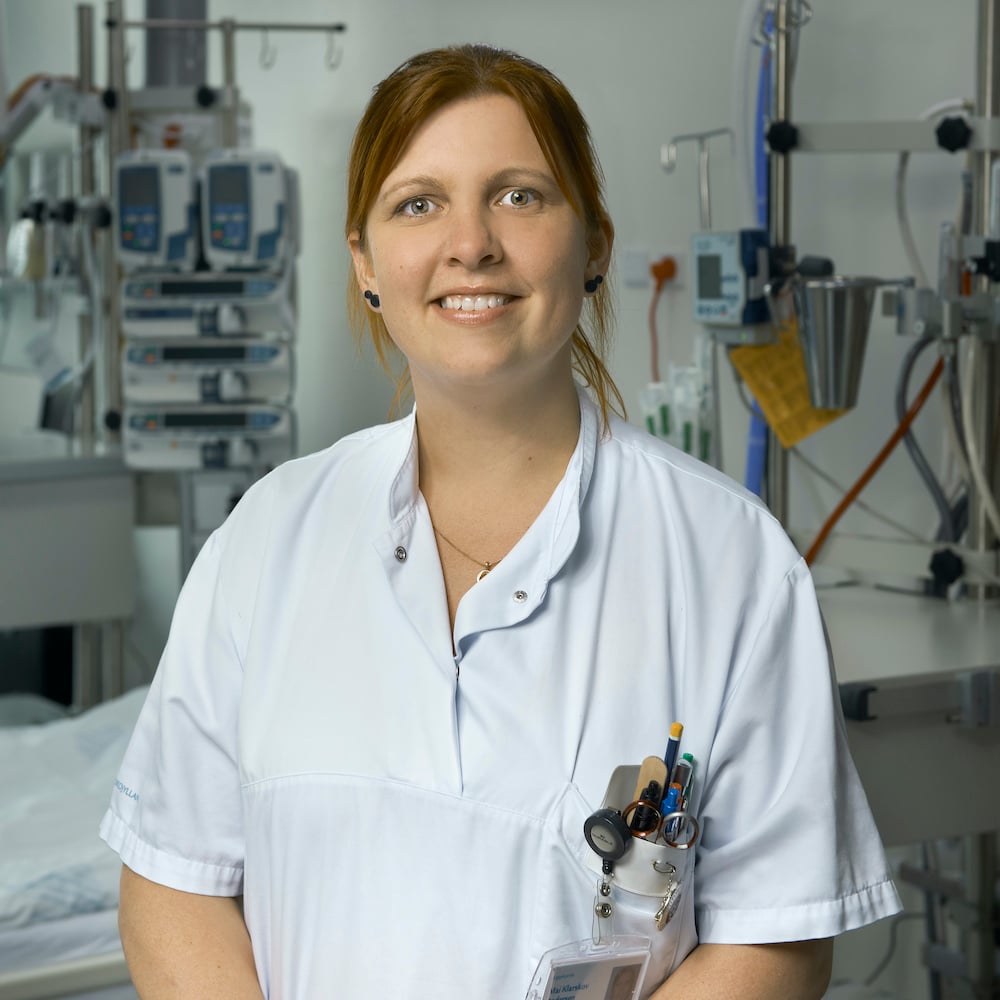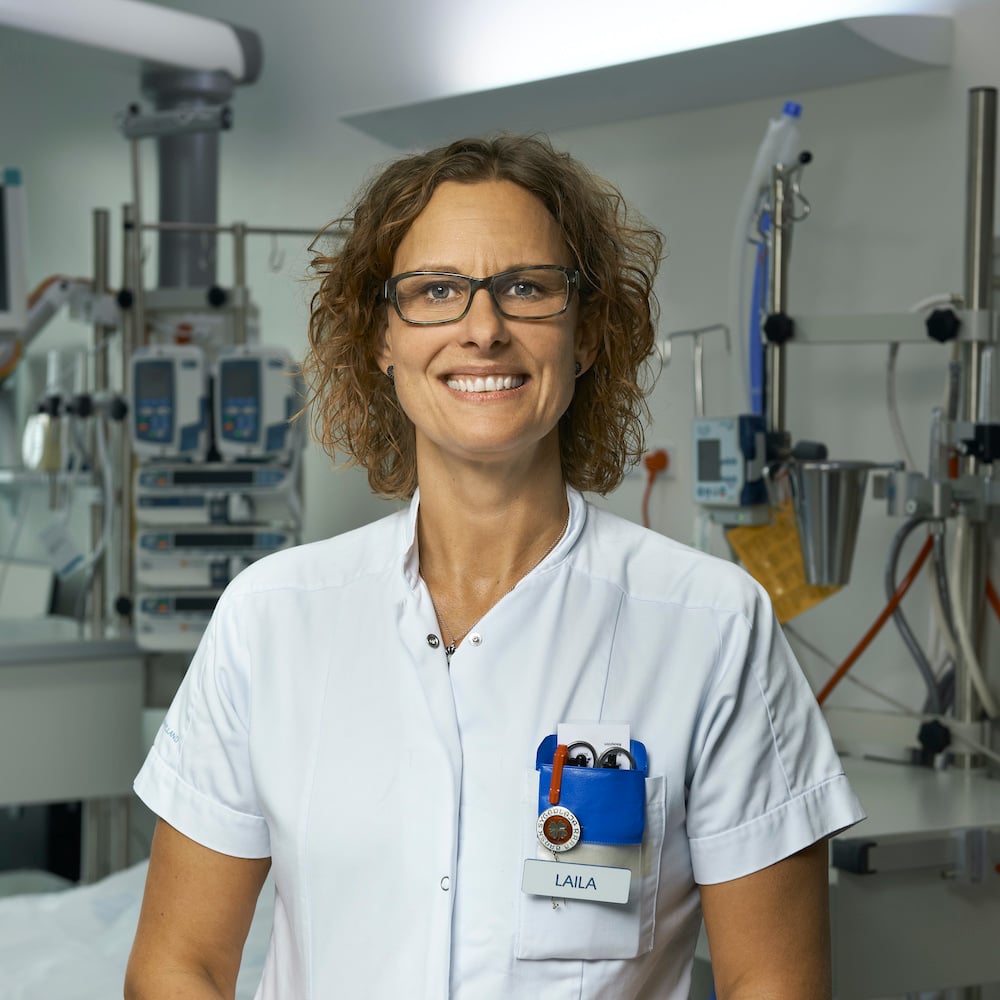Even on a gloomy gray day, there is an abundance of clear sunlight in the intensive care unit in Thisted, provided that you are in one of the five patient rooms equipped with ergonomic circadian lighting. And if you ask the staff, the answer is prompt - circadian lighting makes a noticeable difference by creating better conditions for patients and enhancing employee well-being.
Flexibility and gentle ambiance
Funding from the A.P. Møllerske Støttefond made it possible to install ergonomic circadian lighting in some areas of the intensive care unit in Thisted in early 2014. The lighting has had such a positive effect that the staff now dreams of having ergonomic circadian lighting throughout the entire department, benefiting both patients and employees.

For nurse Jane Tovsig, Ergonomic Circadian Lighting fulfills a long-standing desire for more flexible and softer lighting.
— Circadian lighting is easy to use and understand. We receive positive feedback on the soft light from patients who can speak. The flexibility is advantageous, and depending on the needs, we can switch to mood lighting or adjust the brightness. I would really love for us to have circadian lighting in the office as well, especially at night. At one point, we had to wear sunglasses during the night shift because the light was too strong. Now, we have a dimmer switch, but it's not the same as circadian lighting, she explains.
A stable circadian rhythm supports the treatment
Treatment and care of intensive care patients in the department occur around the clock. These patients require frequent check-ups during the night, ideally without disturbance. The human body thrives on a stable circadian rhythm, with exposure to natural daylight during the day and darkness at night, to ensure the proper production of the essential hormone melatonin is not disrupted. Melatonin is an antioxidant that is promoted in darkness and inhibited by daylight. For intensive care patients, maintaining a normal circadian rhythm is especially important for optimal treatment and care outcomes. Ergonomic circadian lighting has been developed with a special night light that does not disrupt this rhythm.

— I was on maternity leave when the circadian lighting was installed, so I didn't receive the same introduction as my colleagues. But it only took me about 30 seconds to understand it. One of the best things is the transition from night to day - and from day to night. The night light works really well at night when you need to do something without disturbing the patient. The effect is clear when comparing it to room 5, where we still have the old lighting, says nurse Mai Fredsø.
Beneficial for both patients and staff
Head nurse Mie Landbo Mulberg is one of the dedicated individuals who made a tremendous effort to introduce ergonomic circadian lighting in the intensive care unit in Thisted.
— We first heard about circadian lighting way back in 2009, and it has been on our wish list ever since. When the department was due for renovation, we sent out applications to various foundations, and it paid off. Our desire to have ergonomic circadian lighting stems from the need to create a balanced circadian rhythm and a more peaceful environment for our intensive care patients. At the same time, it provides the staff with a better working environment, she explains.
Nurse Laila Stausholm shares her experience of increased well-being with the new lighting.
— Circadian lighting is incredibly pleasant to work in. I particularly appreciate the warm color and the ability to adjust the light according to each patient's needs. The lighting creates a special atmosphere in the department. During our morning reports, we can see how the sunlight enters the rooms, and it's truly beautiful, she says.

— Circadian lighting is incredibly pleasant to work in. I particularly love the warm color and the ability to customize the light to each patient's needs. It creates a special atmosphere in the department, especially during our morning reports when we can witness the sun rising in the rooms, she shares enthusiastically.
Ergonomic Circadian Lighting
Ergonomic circadian lighting contributes to a natural circadian rhythm for both staff and patients in departments with round-the-clock activity. This type of lighting is activity-based and divided into zones, allowing staff to perform their work without disturbing patients. Ergonomic circadian lighting follows the rhythm of the sun throughout the day and is equipped with a special night light that does not disrupt the production of the sleep hormone melatonin.

The best thing for humans is to spend time outside in the natural daylight. The next best thing is to have artificial light that follows the sun's rhythm, with the strongest light during the middle of the day and darkness at night. Currently, the effects of ergonomic circadian lighting are being documented through clinical research at Aarhus University Hospital and Glostrup Hospital.

